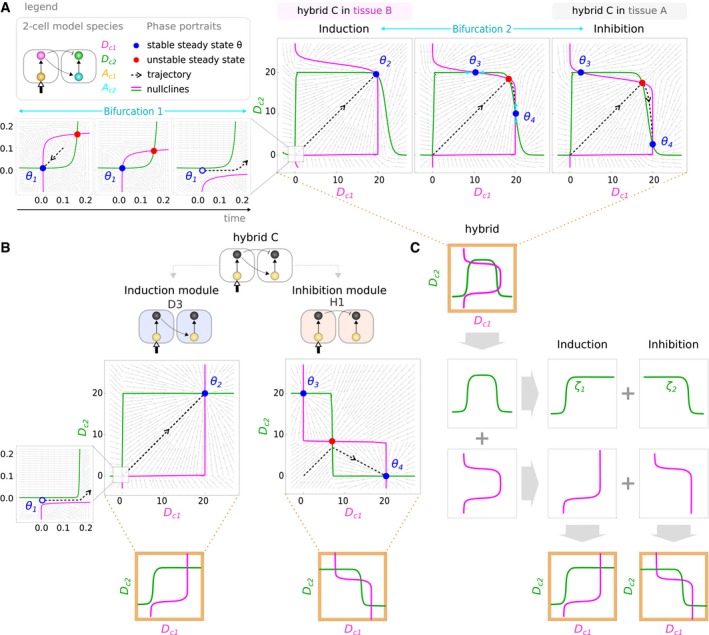How is hybrid C capable of performing both functions upon a change in the context signal? We use the simplified 2‐cell model of Box
2 with parameters (
w
A = 0.41,
w
B = 5.49,
w
C = −0.30,
α
A = 6.93,
α
D = 12.79). The context signal changes the position and number of steady states through a
pitchfork bifurcation (Strogatz,
2014) (Bifurcation 2). This bifurcation drives the trajectory to access different attractors found in regions of the phase portrait corresponding to induction (
θ
2) and inhibition (
θ
4) patterns, respectively.

